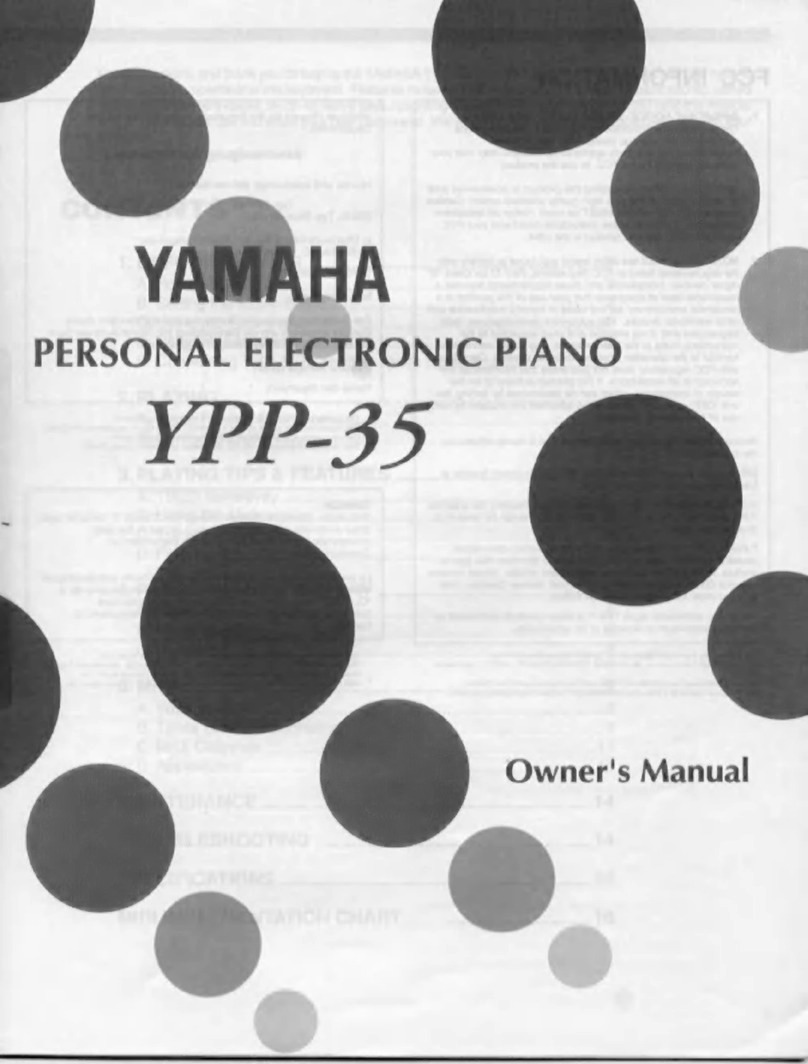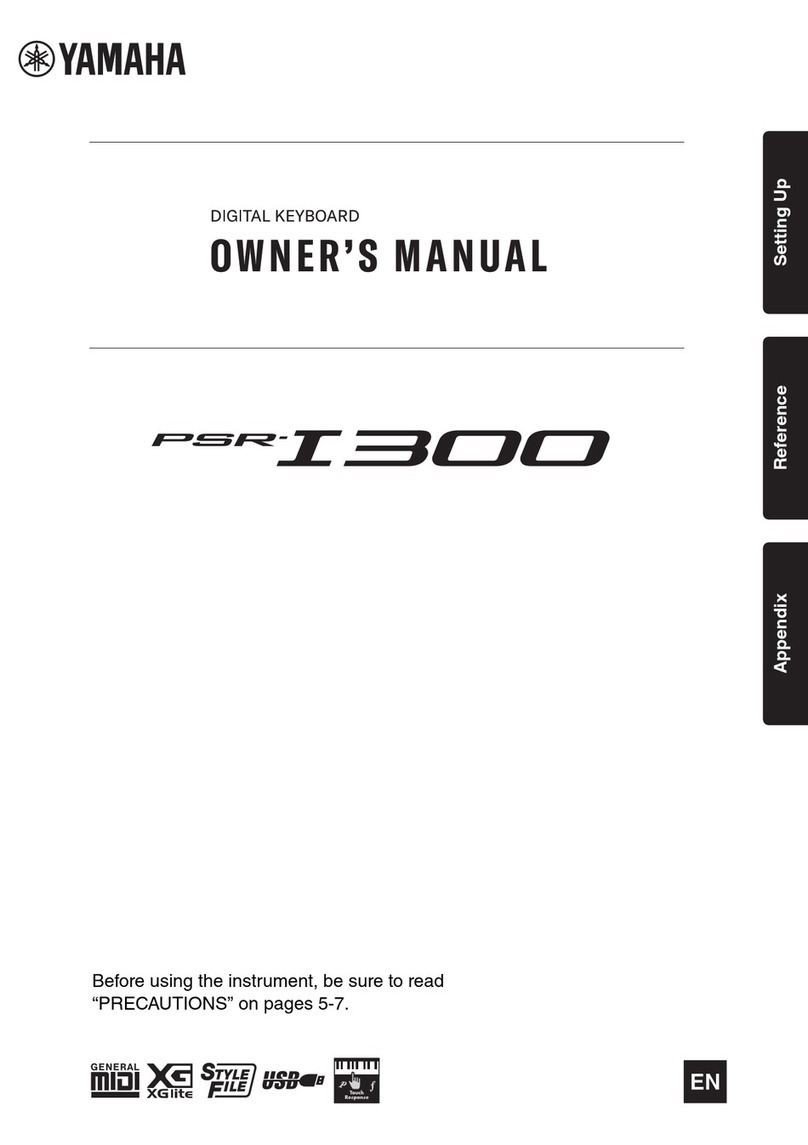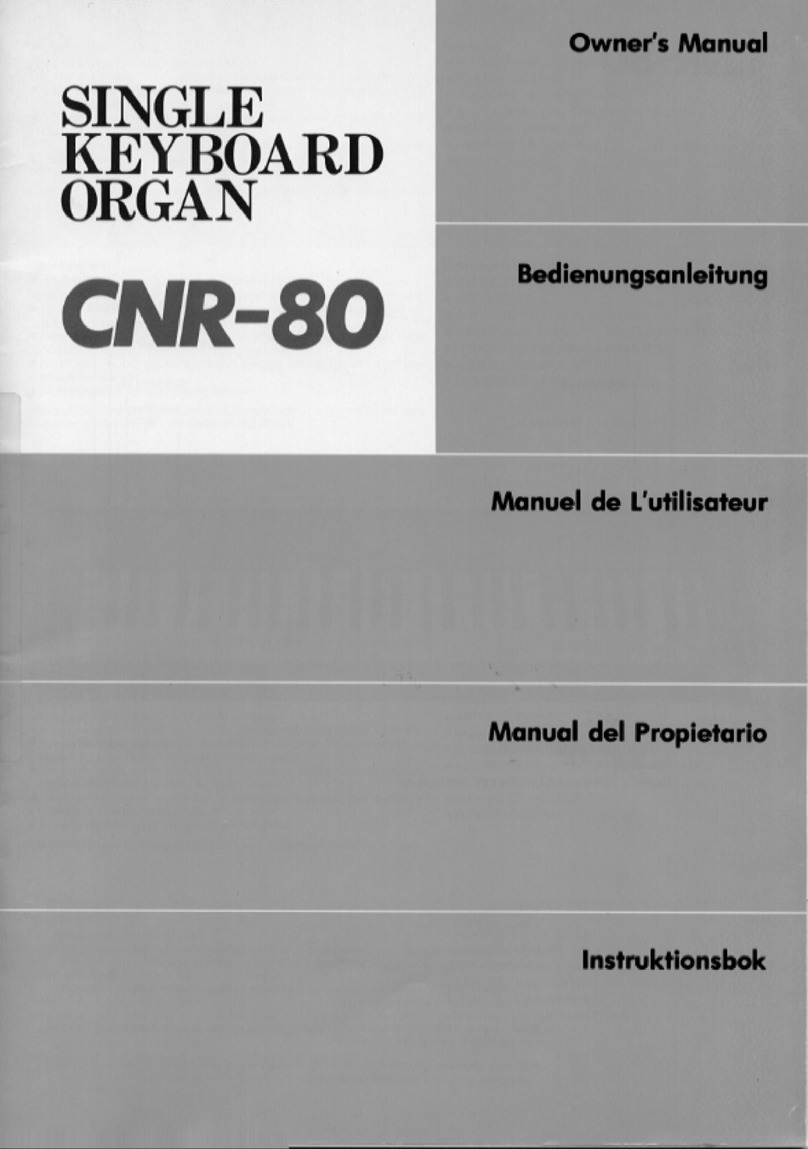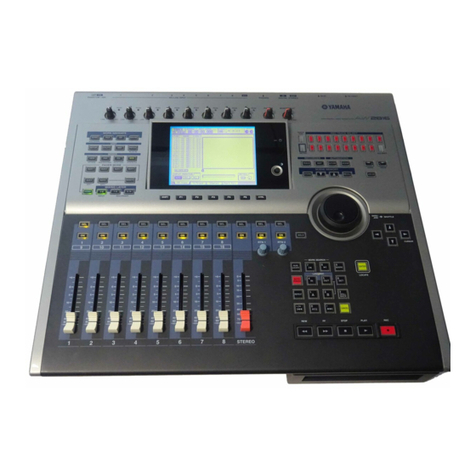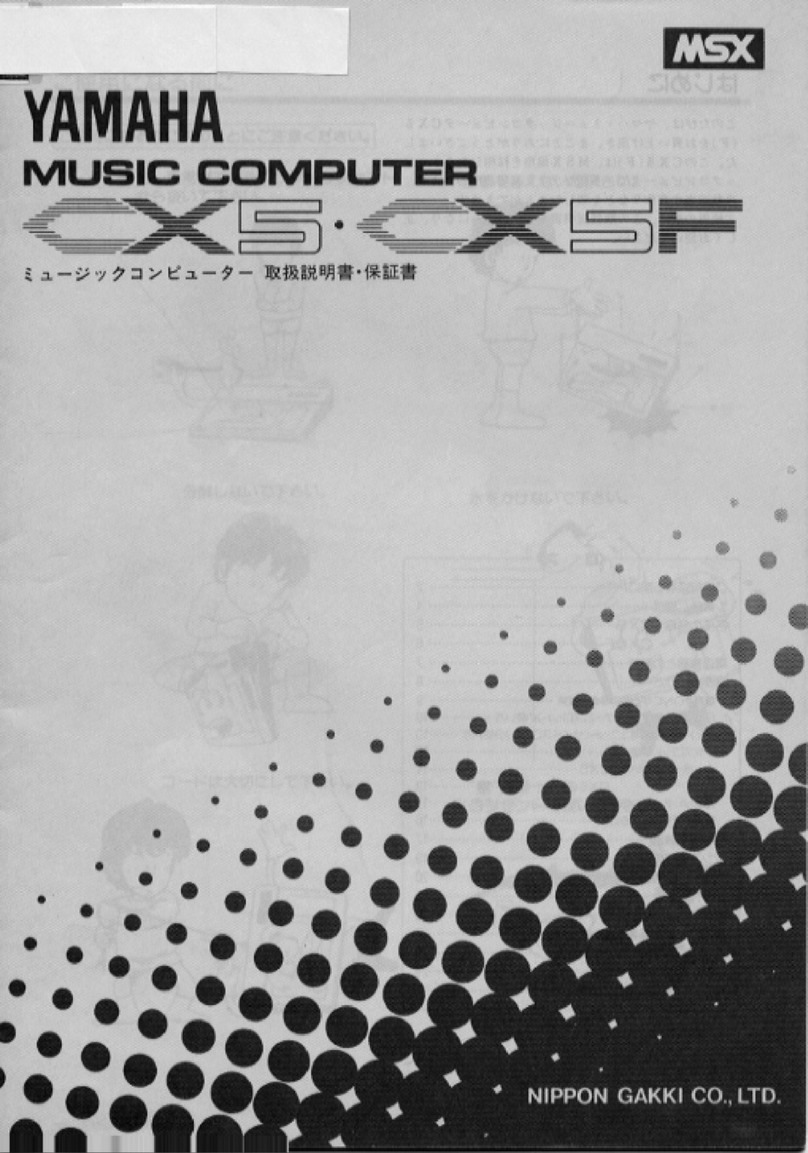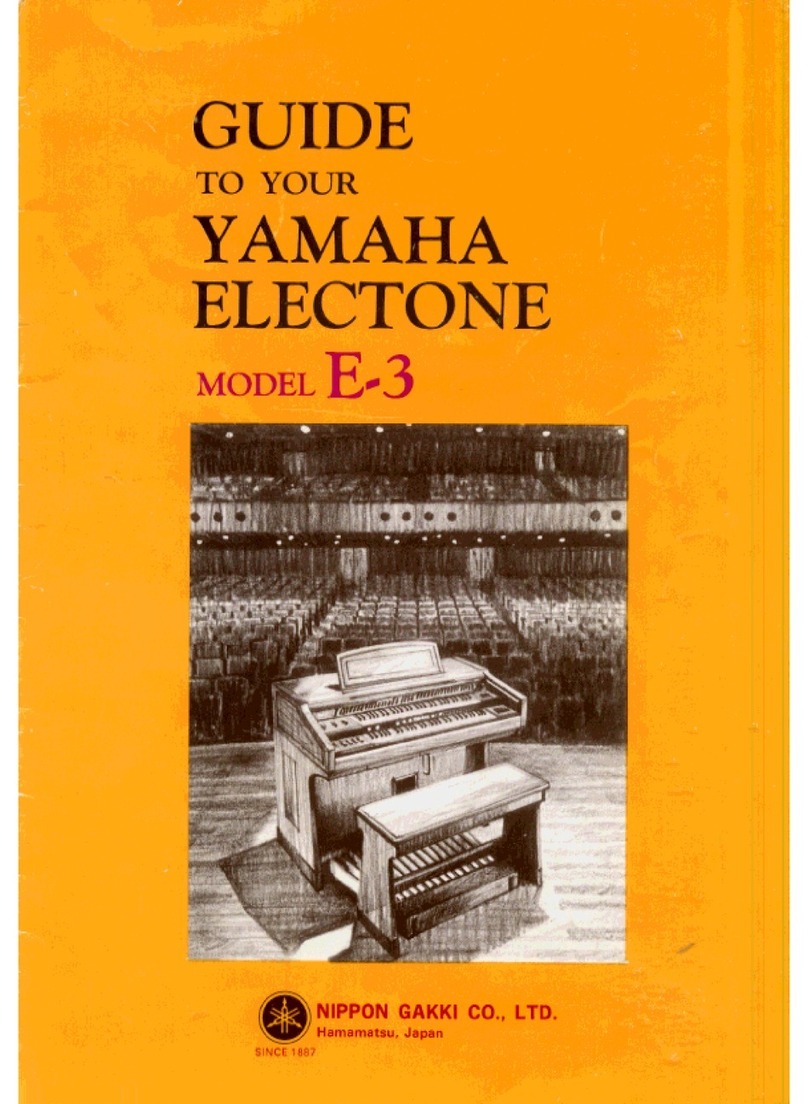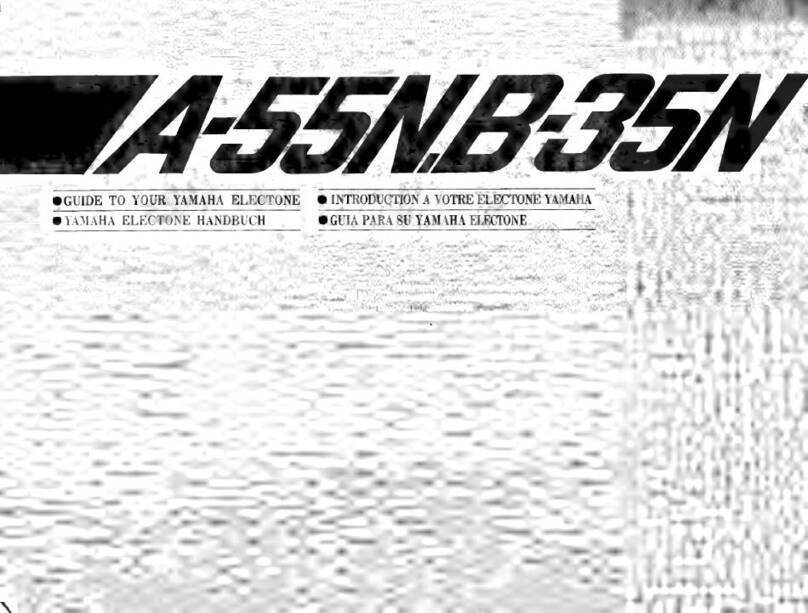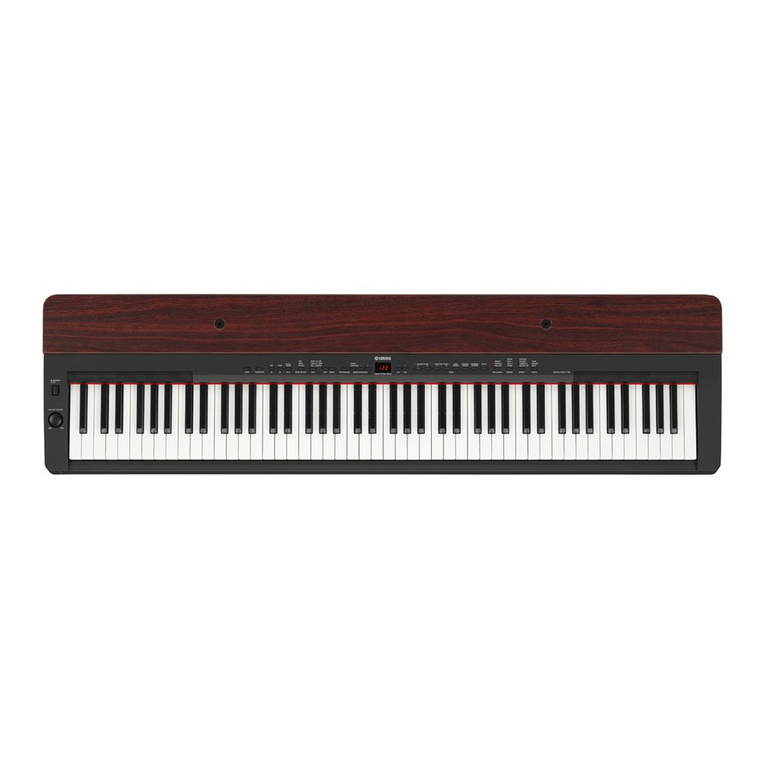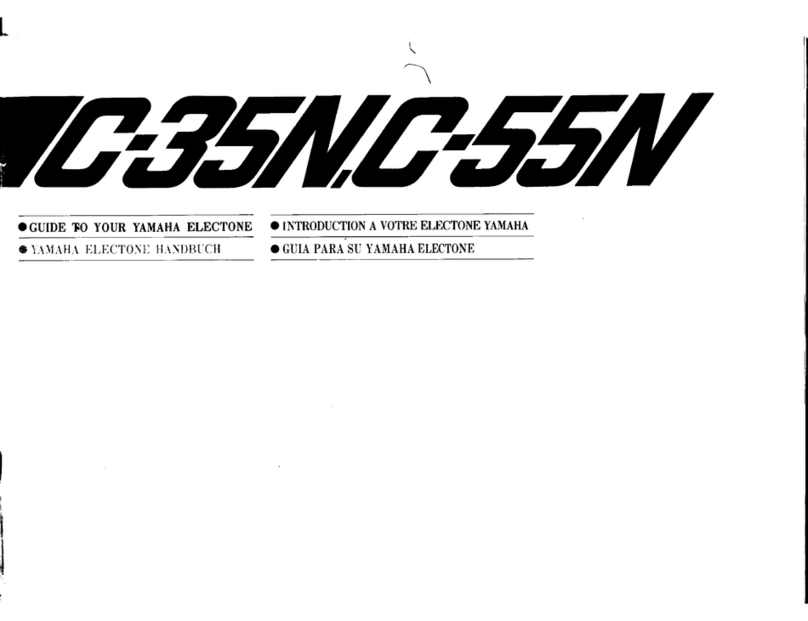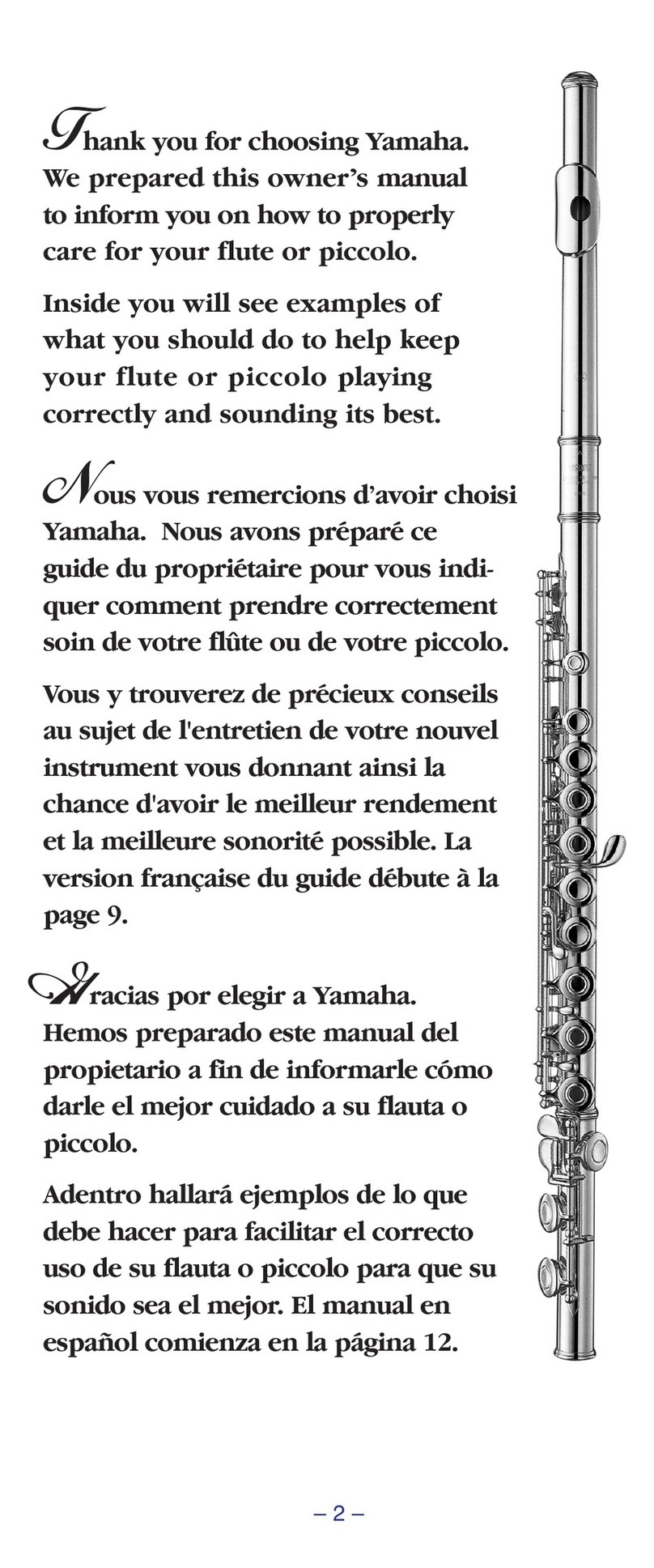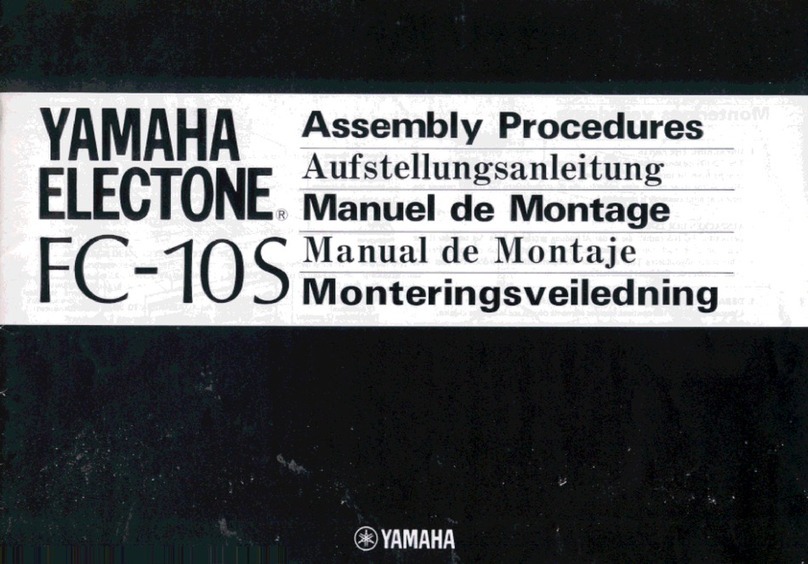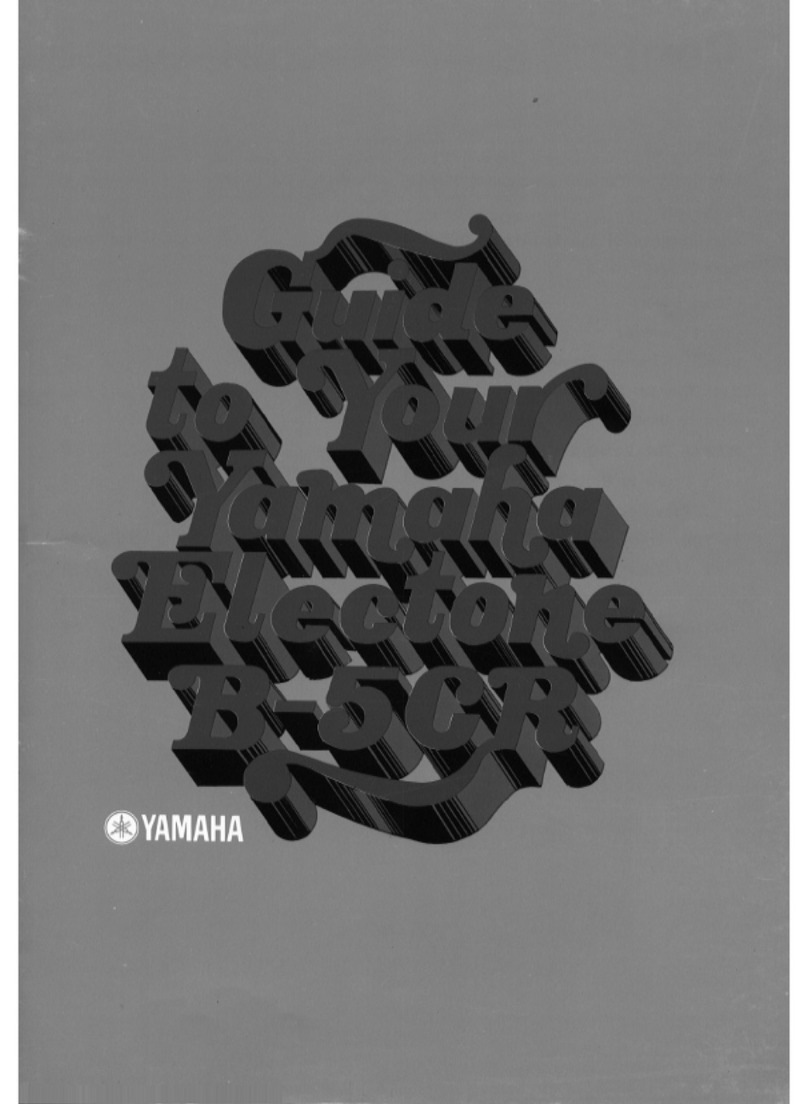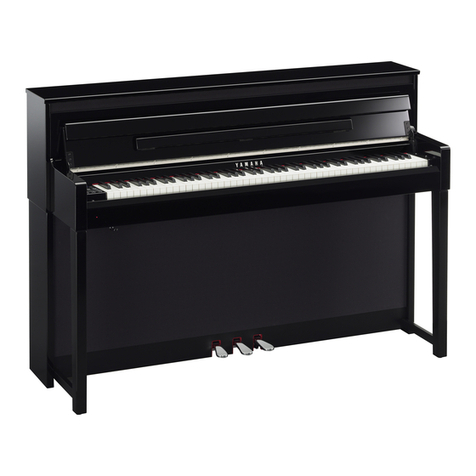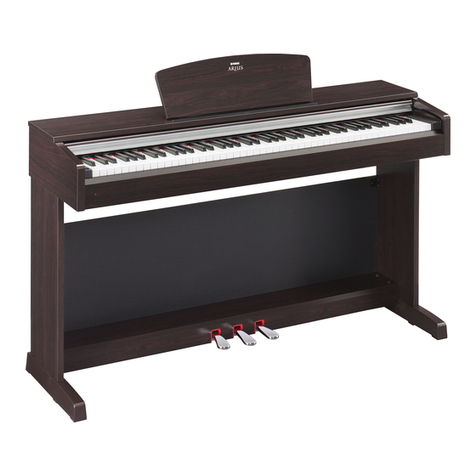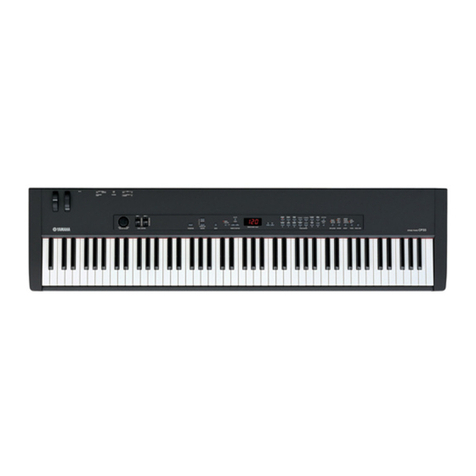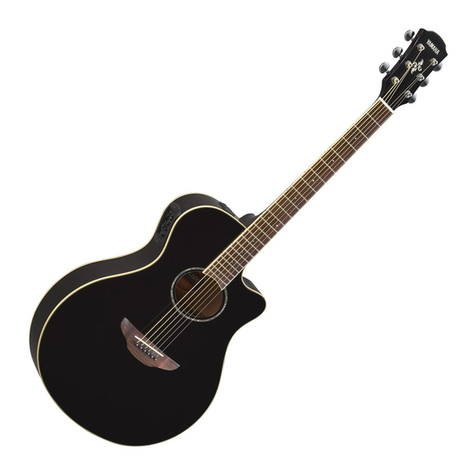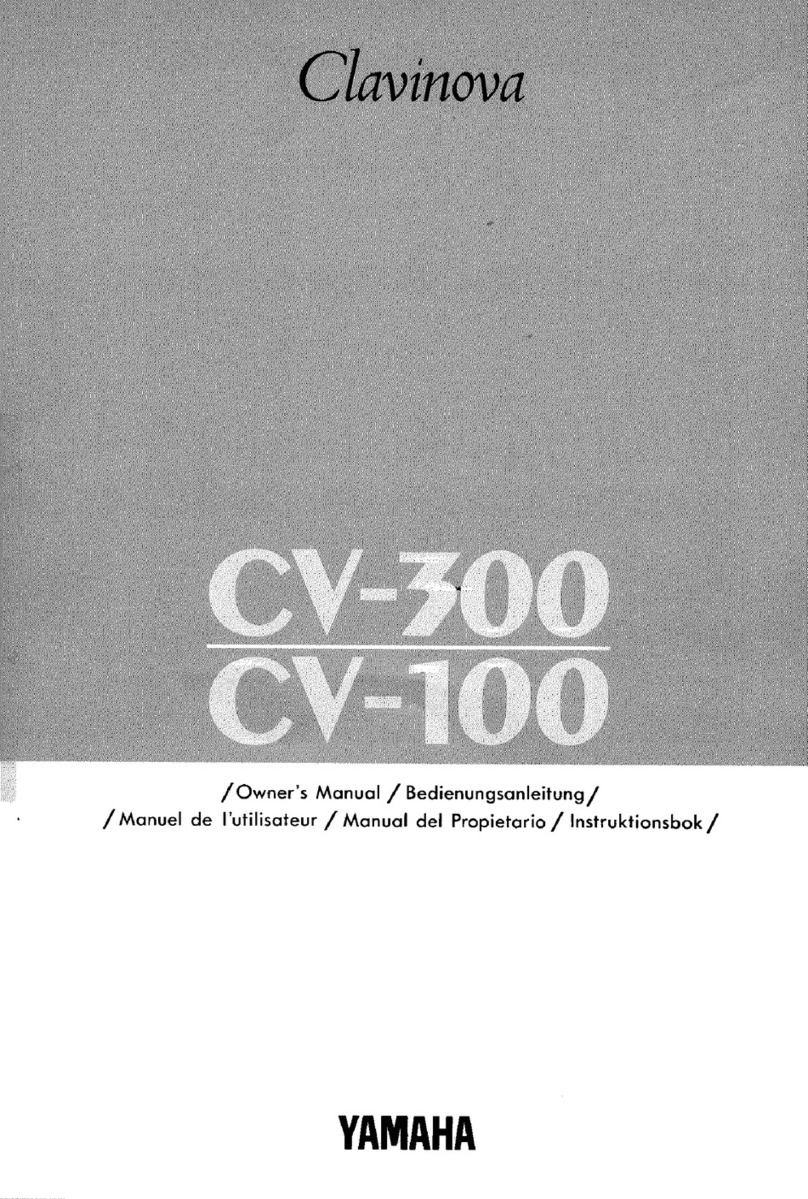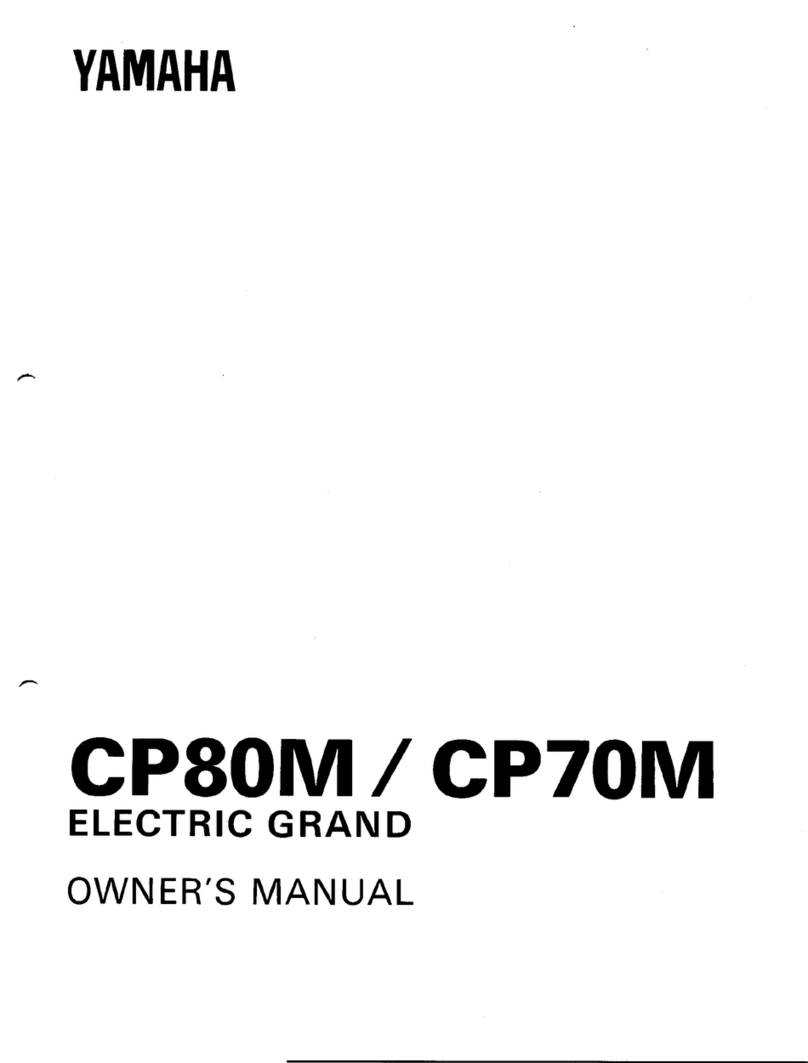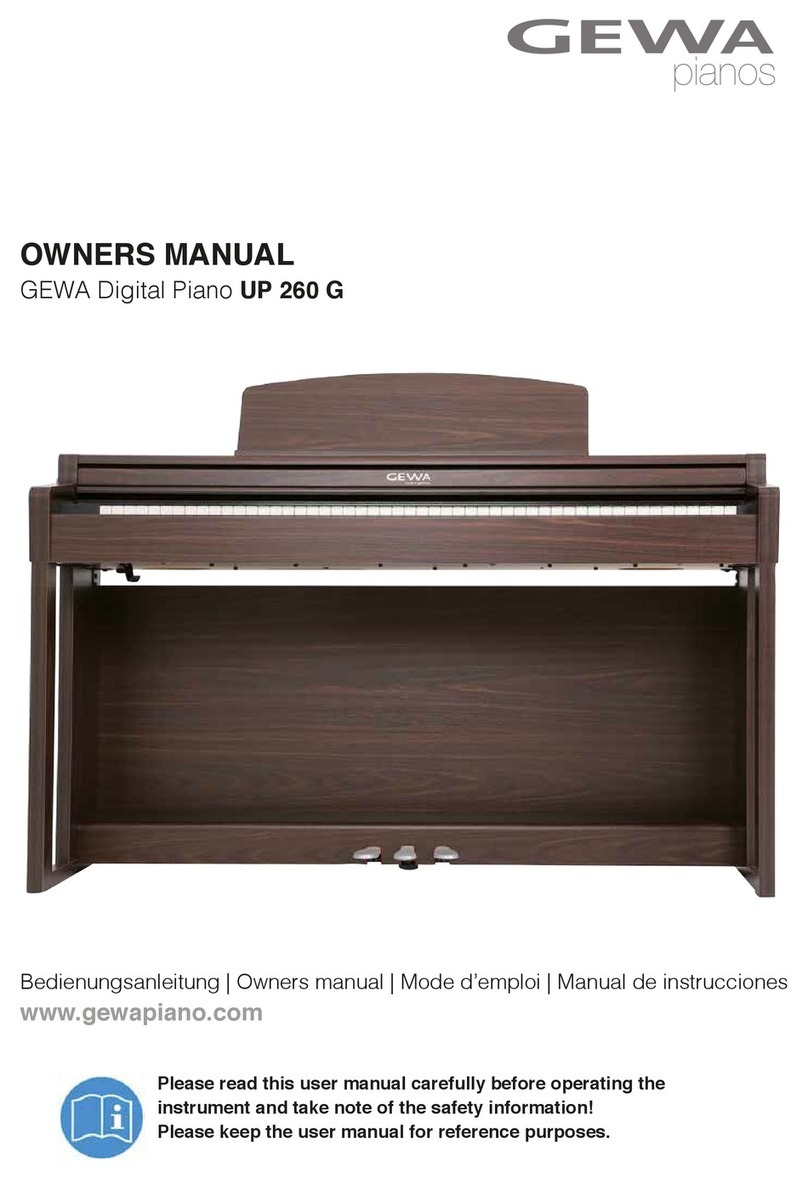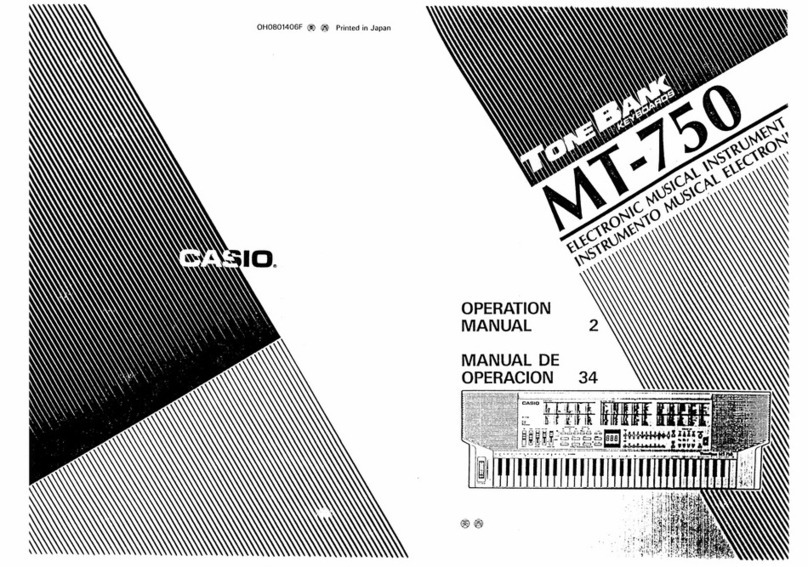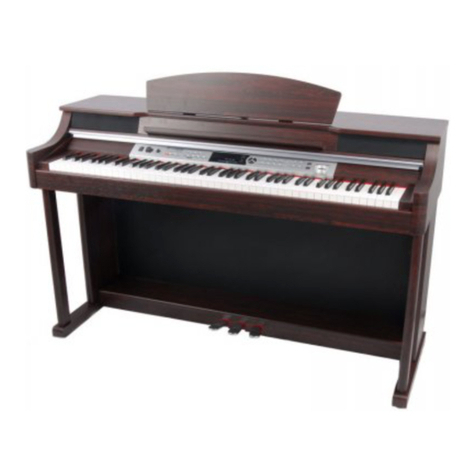
CONTENTS
THE
BASIC
FEATURES
Page
WCONANRWN
.
First,
Let’s
Produce
Some
Sounds
.
Registrations
for
Beginners................
‚
Setting
the
Voices
at
the
Рапе!...........................
.
Adding
Rhythm
..............
sss
.
Producing
the
Sounds
of
Percussion
Instruments
.
Having
Fun
with
Automatic
Accompaniment
...
.
Choosing
an
Accompaniment
Pattern
......
.
Harmonizing
the
Melody......................
.
Memorizing
Your
Favorite
Registrations
.
Transferring
Information
to
a
Pack
.
Using
Various
Voices
from
a
Pack
INHALTSVERZEICHNIS
Call
a
Registration
by
a
One-Touch
Operation
Using
Effects
for
an
Even
Richer
Sound......
OTHER
INFORMATION
e
Accessory
Jacks
e
Electromagnetic
Interference
. a
е
installation
and
Maintenance...
29
e'Optiorial
Items...
au
ete
rite
29
e
Troubleshooting.
30
e
Specifications
.....
.32
e
How
to
use
MIDI..
e
Glossary
for
the
HC
Electones..
e
MIDI
Specifications................
@
MIDI
Implementation
Chart...
GRUNDLEGENDE
FUNKTIONEN
Seite
«оо
-1
с
MA
Co
P
—
.
Lassen
Sie
uns
jetzt
einige
Klänge
erzeugen
...........................
7
.
Registrierungen
für
Anfànger...................
.
Einstellung
der
Stimmen
am
Bedienfeld
.....
.
Abrufen
einer
Registrierung
auf
einfachen
Tastendruck..
.
Verwenden
von
Effekten
für
noch
reicheren
Sound
.............
.
Hinzufügen
von
Rhythmus
.
Erzeugung
des
Klangs
von
Perkussionstrumenten
.
Spaß
mit
automatischer
Begleitung
......
.
Wählen
eines
Begleitpatterns
.....
.
Harmonisierung
der
Melodie
..
.
Speichern
Ihrer
beliebtesten
Registrierungen
.
.
Übertragen
der
Information
zum
Pack
..............
.
Verwendung
verschiedener
Stimmen
von
einen
Pack...
SONSTIGE
INFORMATIONEN
e
Zusätzliche
Anschlußbuchsen
...................
a
nennen
@
Elektromagnetische
Interferenzen...
e
Aufstellung
und
Pflege
...
e
Zubehör............
@
Fehlersuche...
e
Technische
Daten...
Ф
Verwendung
von
MIDI...
©
Glossar
für
HC
Electones...
e
Technische
Betriebsdaten
für
MIDI.
©
MIDI-Anwendungstabelle
TABLE
DES
MATIERES
DENDAN
=
CARACTERÍSTICAS
BÁSICAS
.
En
primer
lugar,
produzcamos
algunos
sonidos...
.
Registros
para
principiantes
.
Ajuste
de
las
voces
en
el
panel
od
.
Invocación
de
un
registro
presionando
un
n
Боп...
12
.
Empleo
de
efectos
para
conseguir
un
sonido
todavía
mejor...14
.
Adición
de
ritmo
.
Producción
de
sonidos
de
instrumentos
de
percusión
.
Acompañamiento
automático
....
.
Elección
de
un
patrón
de
acomp
.
Armonización
de
la
melodia
...................
.
Memorización
de
sus
registros
favoritos
.....
.
Transferencia
de
información
a
un
cartucho.
.
Empleo
de
varias
voces
de
un
cartucho.....
tO
00
—1
C»
n
д>»
C2
B2
—
CARACTERISTIQUES
PRINCIPALES
Page
.
Essayer
de
produire
quelques
sons
7
.
Enregistrements
pour
débutants...
Réglage
des
voix
sur
le
panneau
..
.
Appeler
un
registre
par
enclenchement
d'une
seule
touche..
12
.
Utilisation
des
effets
pour
obtenir
un
son
plus
riche
as
.
Ajout
de
rythme
vo...
a
aaa
e
.
Production
des
sons
des
instruments
de
percussion
.
Les
joies
de
l'accompagnement
automatique...........
.
Sélection
d'un
motif
d'accompagnement
....
.
Harmonisation
de
la
mélodie
..............
.
Mémorisation
des
mélodies
favorites...
.
Transfert
d'information
sur
un
accu
mémoire...
.
Utilisation
des
différentes
voix
d'un
accumulateur
..
AUTRES
INFORMATIONS
€
Prises
accessoires
e
Interférence
électromagnétique
e
Installation
et
entretien......
А
€
Accessoires
en
Орііоп.......
220
e
Dépannage
.......
e
Spécifications
....
e
Utilisation
de
la
fonction
MIDI
*
Glossaire
pour
les
Electones
HC..
e
MIDI
Specifications
.....
€
Tableau
d'implantation
Págína
7
OTRA
INFORMACIÖN
@
Tomas
para
accesorios
e
Interferencia
electromagnetica.
e
Instalación
y
mantenimiento...
€
[temes
opcionales.......................
e
Guía
para
la
solución
de
problemas..
e
Especificaciones.............
e
Cómo
emplear
MID!......
e
Glosario
para
los
Electones
HC
e
MIDI
Especificaciones
e
Tabla
de
implementación
de
MIDI
....
